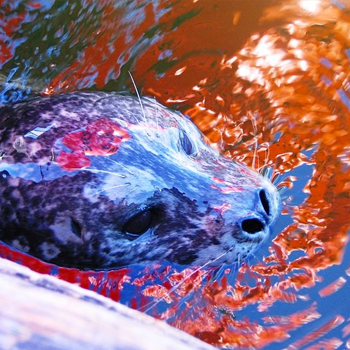Hadrons can divided into two sub-groups, Baryons and Mesons. Examples of Baryons are Protons and Neutrons, and for Mesons, Kaon and Pion particles.
In most simple cases, the Baryons have a three-quark structure and the Mesons and a quark-antiquark structure. For 'antibaryons', this can be found by taking a three-antiquark structure.
For example, the proton (denoted #p#) has the quark structure #u u d# (where #u# denotes the up quark with positive #2/3# charge and #d# denotes the down quark with negative #1/3# charge).
An important characteristic to remember is that Baryon number is conserved within an interaction. An ordinary Baryon has a Baryon number of #1# and ordinary quarks have a baryon number of #1/3#, such that the #u u d# combination gives #1# as the baryon number of a proton. Similarly, all antibaryons and antiquarks have the opposite baryon number value from their counterparts (using negatives where positives where) This is why an antiproton (denoted #bar p#) has the quark structure #baru baru bard#, which if you notice is the complete opposite from the proton structure. The antiproton will therefore have the opposite baryon number (#-1#) and charge (#-1#).
Things get a bit strange with Mesons, such that some particles like the #K^0# is its own antiparticle. I'll explain how this can happen next:
Firstly, because Mesons have the quark-antiquark structure, it's baryon number is #0# (since recall that a quark has #1/3# and an antiquark has #-1/3#). We also need to introduce the strange quark, which has a charge of #-1/3# and a baryon number of #1/3#. (Look up strange number conservation, namely not occurring in weak interactions, for further extension here). Kaons have the superscript value of its charge such that #K^0# has a charge of #0#. So we can 'make' it from the quark structure #s baru#. Consider that the so-called antiparticle of this is going to be #bars u#, but if we look at the charges this will also produce the #K^0#, therefore the #K^0# is its own antiparticle. The antiparticle of #K^+# is #K^-# too.
This answer is very long but hopefully it gives some insight into antiparticles within the hadron group.

